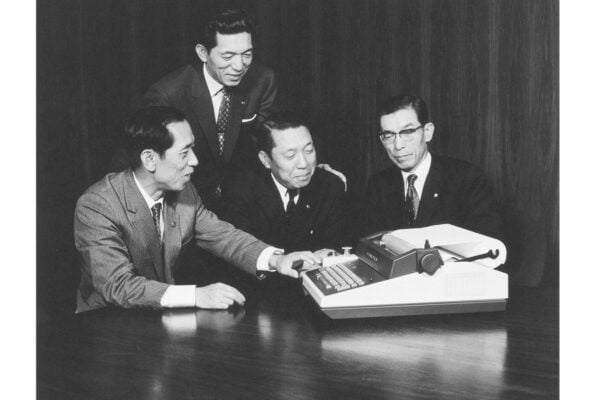Calculators in the classroom: re-thinking the teacher’s role

Calculators in the classroom: re-thinking the teacher’s role
While calculators play a key role in education at GCSE, and even more so at A level, we understand it’s not always easy to plan where they fit into the classroom.
It’s a challenge that can affect both students and teachers alike.
For students, it’s about getting to grips with the calculators and understanding how they’re best used to solve maths problems. While we know for teachers, it can be a challenge to ensure students are competent with the technology (and confident when it comes to exam time) while not simply relying on the features of the calculators to produce answers. Understandably, this juggling act can put pressure on teachers when planning where calculators fit into the curriculum – and which calculators should be used. We sat down with Gerard Dummett, Education Manager at Casio Education, to understand how teachers can build confidence with calculators in the classroom.
Teaching ideas, not technology
One of the key messages we try to get across to teachers is to consider reframing how they think about teaching with calculators. Anecdotally, we’ve heard how teachers can sometimes lack the confidence to teach students all the functions on a calculator over concerns of making a mistake in front of the class or taking too long to demonstrate how a function works.
It’s understandable that teachers can be apprehensive at the prospect of teaching with calculators and become focused on teaching the calculators’ functionality rather than the maths problems the calculators help solve. We’d encourage any teachers who are nervous about teaching with either scientific or graphic calculators to start slowly and bring the calculators into lessons whenever you feel it’s appropriate. Once the calculators are in use, we recommend simply teaching students the basic functionality. This can be made even easier using technology like an emulator, which projects the calculator onto a screen at the front of the classroom, so you can run through the functionality with everyone together.
Focusing on the fundamentals to build success
Once students are confident with the fundamentals of their calculator, we find that they’ll naturally start to work out how the other functions are used if they’re consistently presented with math problems that require the calculator. One thing we ask teachers to remember is that young people are far more intuitive when it comes to technology. All they need are the basics, and they can typically figure the rest out on their own. This means letting them discover the technology while you, as the teacher, can focus on the maths – it’s a perfect partnership.
Where to put the calculator in the lesson
Apart from teaching students the functionality of the calculators, the other major challenge facing teachers is where calculators fit into lessons. Should they be out all the time and ready to use, or should they be used sparingly? We know this can be difficult for teachers to balance. The problems can start when calculators start to become the focus of the lesson, rather than supporting the maths. What we recommend would depend on the experience your students have with the calculators. Early on, it could be useful for students to use the calculators more often to make them more proficient and confident – especially when they’re transitioning to using a particular type of calculator for the first time.
Ultimately, we’d encourage teachers to try and strike a balance when it comes to using and teaching with calculators, but always with a focus on the calculator being a supporting tool for students to investigate maths problems, rather than being the focus on the lesson. By viewing calculators as a supporting tool – rather than simply a device that solves problems – students become more competent in linking the maths concepts; they learn the calculator’s functions. They also become more diligent in checking their inputs on a calculator when solving problems or validating their thinking, rather than following functions and taking whatever answer they get from the calculator as correct.
We tend to hear from schools that this approach produces students who are more capable and confident when thinking about maths concepts and solutions and using the right functions to interpret information – which is particularly useful for those students looking to take maths into higher education from A-level to university and higher.
Leaning on reliable support
As a teacher, you’re not alone in helping students overcome challenges using a calculator. Casio provides free skills training sessions to help teachers build confidence using graphic calculators in the classroom. Sign up for your free session here.
We also have many free training resources, and helpful guides that you can use when it comes to lesson planning for calculators so you can be confident students are achieving the best outcomes.
Take advantage of our free training resources to help plan how to introduce and teach scientific and graphic calculators into your classroom.




